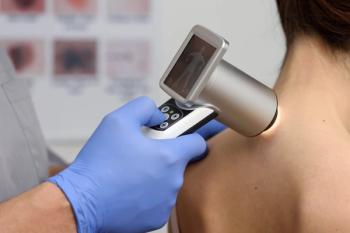
Unique state collaborations help promote appropriate opioid use
Researchers from the Department of Pharmaceutical Sciences at the State University of New York at Buffalo highlight efforts to promote safe and appropriate use of opioids.
Reilly, PharmD, BCPS
Researchers from the
Irene Reilly, PharmD, BCPS, and Barbara Rogler, PharmD, MS, clinical assistant professors, pharmacy, at UB, will discuss implementation of point-of-service (POS) pharmacy edits in the New York State Medicaid pharmacy program.
“The main message is that POS pharmacy edits may positively impact utilization, as we have demonstrated in our collaboration with the
Related:
The collaboration between the State University of New York (SUNY) at Buffalo and NYSDOH came to fruition after state legislation was passed in 2008, which required the NYSDOH to partner with an academic institution to develop a prescriber education program.
Rogler, PharmD, MS
“The intent was to provide prescribers with an evidence-based, non-commercial source of information about pharmaceuticals, to assist in therapeutic decision-making,” Rogler says.
“Through our DUR analyses, we have observed a decrease in the growth rate of opioid utilization in the New York State Medicaid population,” Reilly says. “We think that the combination of the pharmacy POS clinical edits and other programs have helped in this regard. However, additional efforts are needed to ensure optimal opioid use and reduce opioid-related adverse events.”
Since establishing the collaborative, several initiatives have been undertaken; in addition to a prescriber education program, SUNY performs prospective and retrospective DURs for the New York State Medicaid Drug Utilization Review Board, and offers drug information services.
Several efforts have been made to ensure safe and appropriate use of opioids, according to the researchers.
At the federal level, the Drug Enforcement Administration (DEA) issued a final rule in 2014 placing hydrocodone-containing products under Schedule II, a more restrictive category of controlled substances. Also, the government has passed the Affordable Care Act, increasing patient access to mental health and substance abuse treatment. In addition, FDA has required risk evaluation and mitigation strategy (REMS) programs for long-acting opioids. At the state level, changes in controlled substance schedule have been implemented.
Related:
“Several states, including New York State, have also implemented prescription drug monitoring programs, to track the prescribing and dispensing of controlled substances and prevent abuse or misuse,” Reilly says.
In New York State, this program is known as the
“Along with these efforts, multiple professional organizations have issued clinical practice guidelines on the use of opioids, which offer recommendations on choice of therapy as well as strategies for mitigating opioid risks,” Rogler says.
Newsletter
Get the latest industry news, event updates, and more from Managed healthcare Executive.






















































